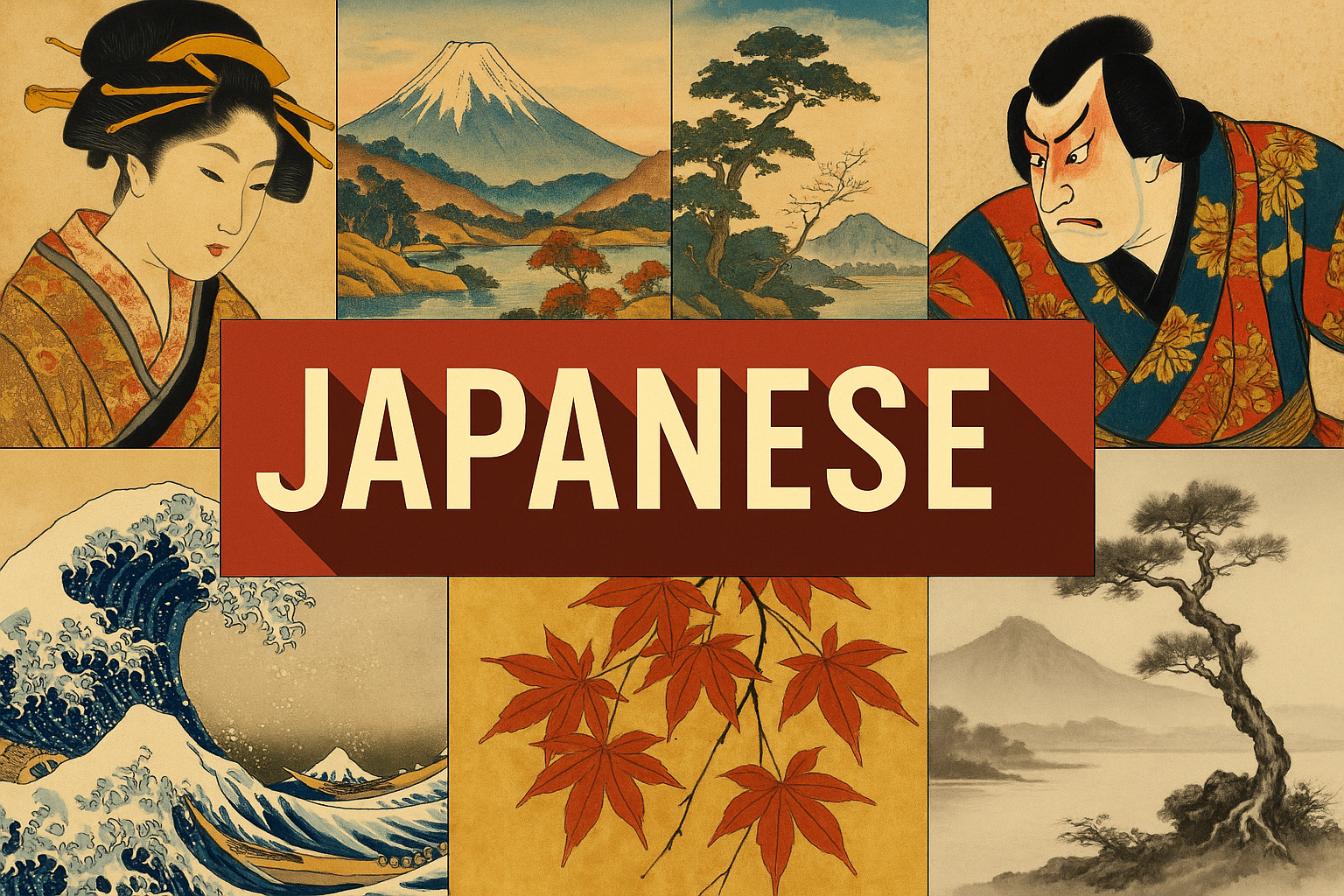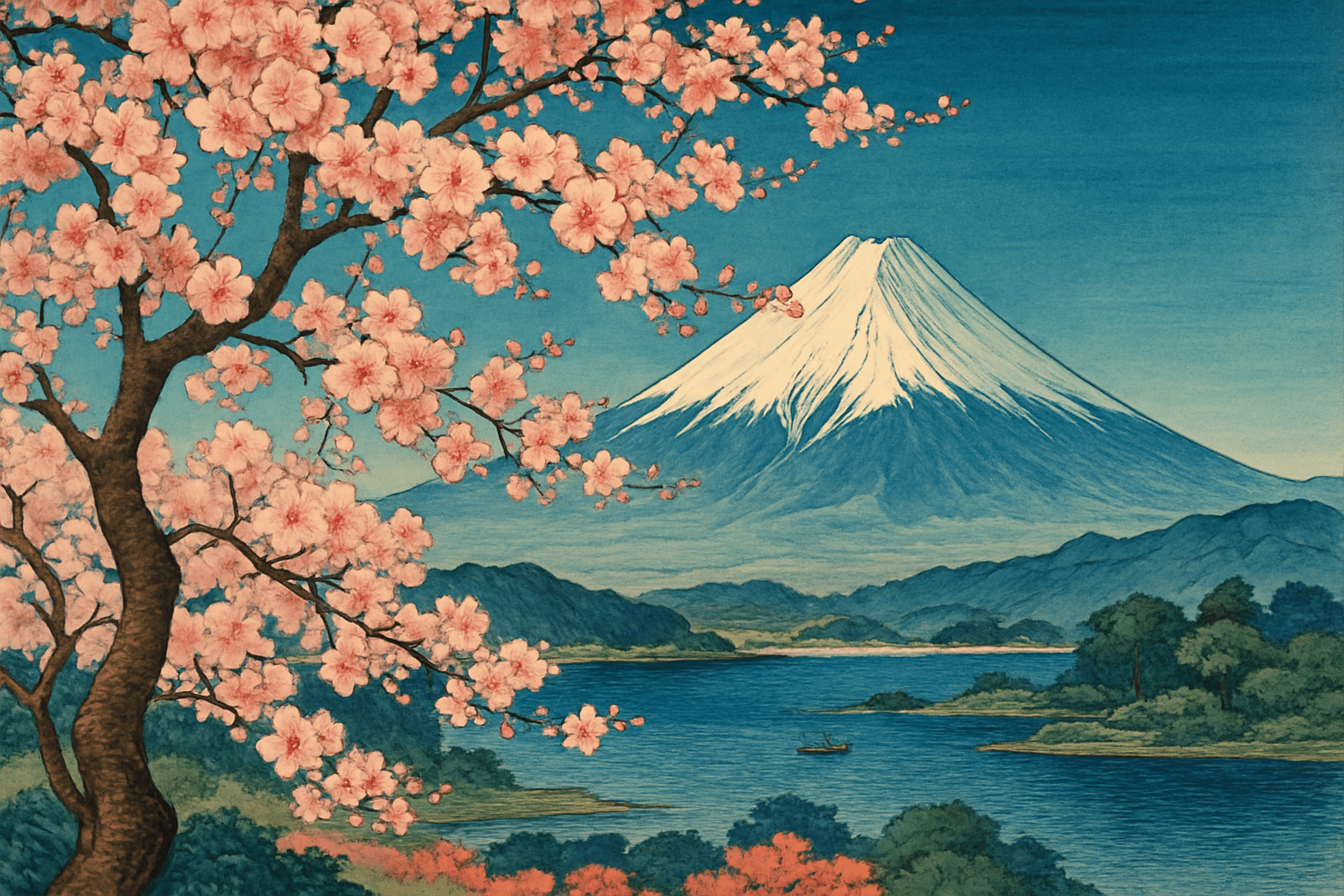
Japaneses
The Japanese art style is characterized by its use of bright colors and bold patterns. It often features nature scenes, such as mountains and flowers.
AOI thinking about Japaneses [+_~]-/
Overview and Quickfacts
The Japanese art style is characterized by its use of bright colors and bold patterns. It is often said to be influenced by the country’s culture and history. Japanese artists often use traditional techniques such as woodblock printing and calligraphy.
Can understand it also, as:
Japanese
Categorize it as:
Impressionism, Modernism
.: Dreaming :.
holds a HAIKU for the art style
:. Thought is power .:
Detailed Description
Japanese art is one of the oldest and most distinctive art styles in the world. Japanese artists have a long history of producing beautiful and unique works of art, from traditional paintings and sculptures to more modern art forms like manga and anime. Some of the most famous Japanese artists include Katsushika Hokusai, who is best known for his woodblock print series The Thirty-six Views of Mount Fuji, and Utagawa Hiroshige, who was another prominent woodblock print artist. Other famous Japanese painters include Sesshu Toyo and Tawaraya Sotatsu. Japanese art is often characterized by its use of bright colors and bold patterns. Traditional Japanese art forms like ukiyo-e woodblock prints often feature scenes from nature or daily life, while more modern art styles like manga and anime often feature characters with large eyes and expressive faces. Whether youÃÂÃÂre a fan of traditional Japanese art or more modern manga and anime, thereÃÂÃÂs no doubt that Japanese artists have a unique and distinctive style that is unlike any other in the world.
.. beep, beep, beep ..
<START OF TRANSMISSION>
1. The Japanese language is a Japonic language that is related to the Ryukyuan languages and was first attested in written records in the 8th century. 2. Japanese is the national language of Japan and is spoken by the vast majority of the country's population. 3. Japanese is an agglutinative language and uses a complex system of honorifics. 4. The Japanese writing system consists of three scripts: hiragana, katakana, and kanji. 5. Japanese is a subjectÃÂÃÂobjectÃÂÃÂverb language and has a large vocabulary that includes many loanwords from Chinese. 6. Japanese dialects vary widely, but the standard dialect, based on the Tokyo dialect, is used in most media and government contexts. 7. The Japanese economy is the third-largest in the world by nominal GDP and the fourth-largest by purchasing power parity. 8. Japan is a highly industrialized country and has the world's second-largest economy by nominal GDP. 9. Japan is a member of the United Nations, the G8, and the G20. 10. Japan is a renowned exporter of automobiles, electronics, and steel. 11. The Japanese culture is known for its traditional arts, such as calligraphy and origami, as well as its popular culture, such as anime and manga. 12. Japan is home to many World Heritage Sites, including the Historic Monuments of Ancient Kyoto and the Historic Villages of Shirakawa-go and Gokayama. 13. Japan is a constitutional monarchy with a parliamentary democracy and an Emperor as the head of state. 14. The Prime Minister of Japan is the head of government and is appointed by the Emperor. 15. The current Prime Minister of Japan is Shinzo Abe, who has been in office since December 2012. 16. The Japanese legal system is based on the civil law system. 17. The Japanese police force is divided into two main branches: the Prefectural Police and the National Police Agency. 18. The Japan Self-Defense Forces are the military forces of Japan and are responsible for the defense of the country. 19. Japan is a highly developed country and has a very high Human Development Index. 20. The Japanese people are known for their longevity and Japan has the highest life expectancy in the world.
<EOF>
.. robbel bob
Visual Examples from our image gallery
Coming soon, we are so slow .. might never come
Artists, Paintings, and more
(be aware, can be highly speculative)
Artists (be aware, speculation possible):
X
Artworks (be aware, speculation possible)
1. The Great Wave off Kanagawa, Katsushika Hokusai, 1829-1833 2. The Red and White Plum Blossoms, Ogata Korin, 1684 3. The Pine Wind, Shohaku, 1763 4. The Wave, Hokusai, 1831 5. The White Wave, Hokusai, 1832 6. The Great Wave, Hokusai, 1833 7. The Red Fuji, Hokusai, 1834 8. The Sudden Shower over the Great Bridge, Hiroshige, 1856 9. The Fifty-three Stations of the Tokaido, Hiroshige, 1833-1834 10. The Rainbow Bridge, Hiroshige, 1832 11. The Plum Orchard, Hiroshige, 1858 12. The Pine Trees, Hiroshige, 1858 13. The Cherry blossoms at Kameido, Hiroshige, 1857 14. The Geishas of the Pleasure Quarter, Utamaro, 1788 15. The Great Wave, Hiroshige, 1832
Epoch
X
AI ART RESSOURCES (AKA, well Tools)
Helping tools -> predefined search links on other pages:











